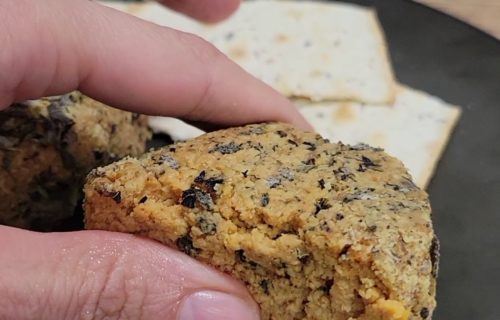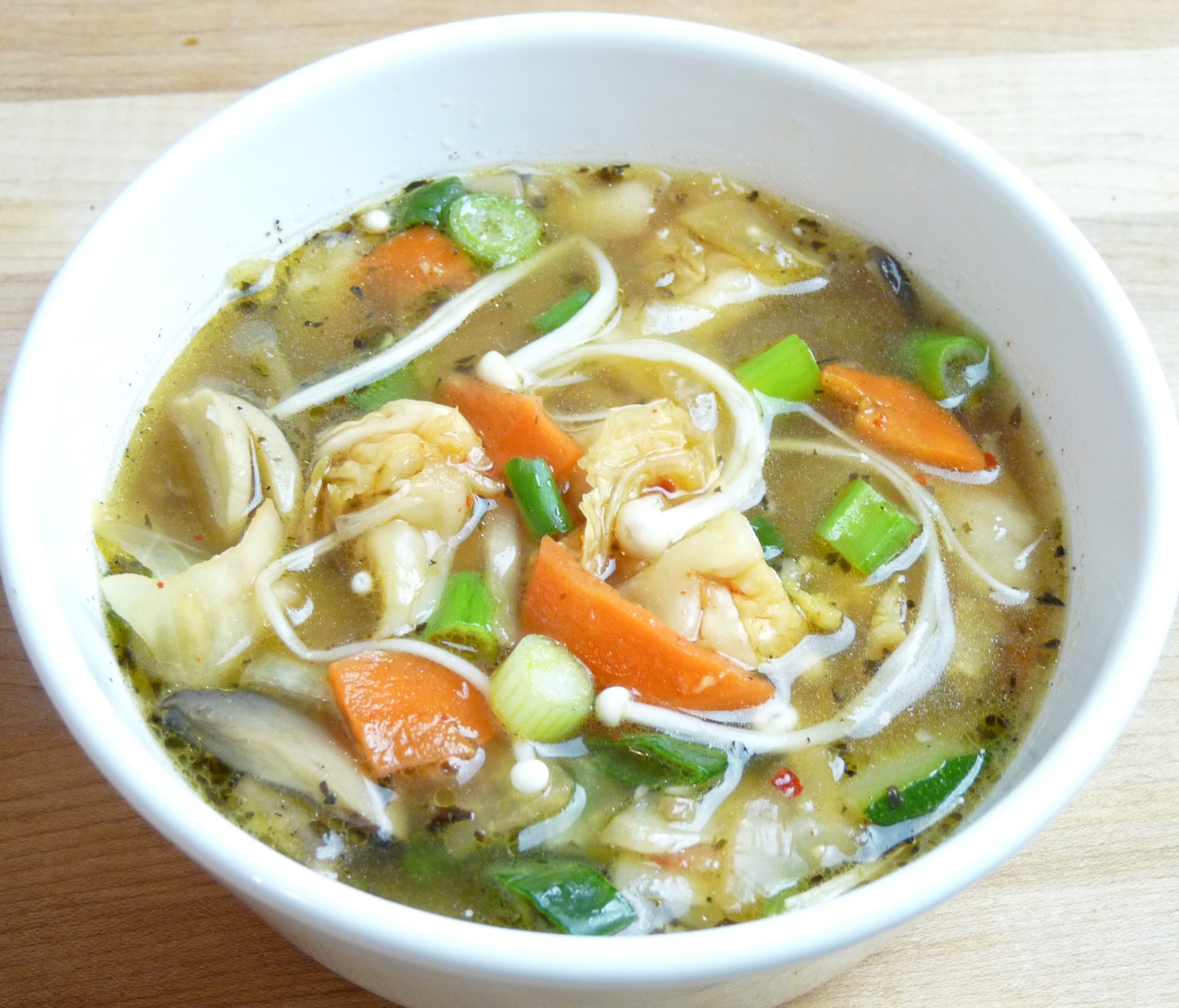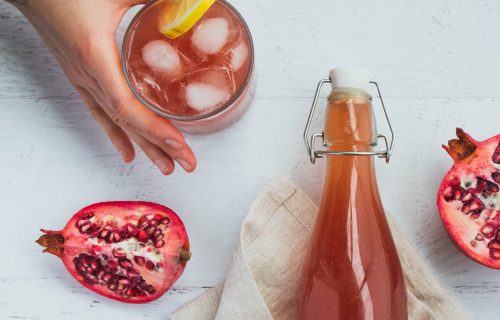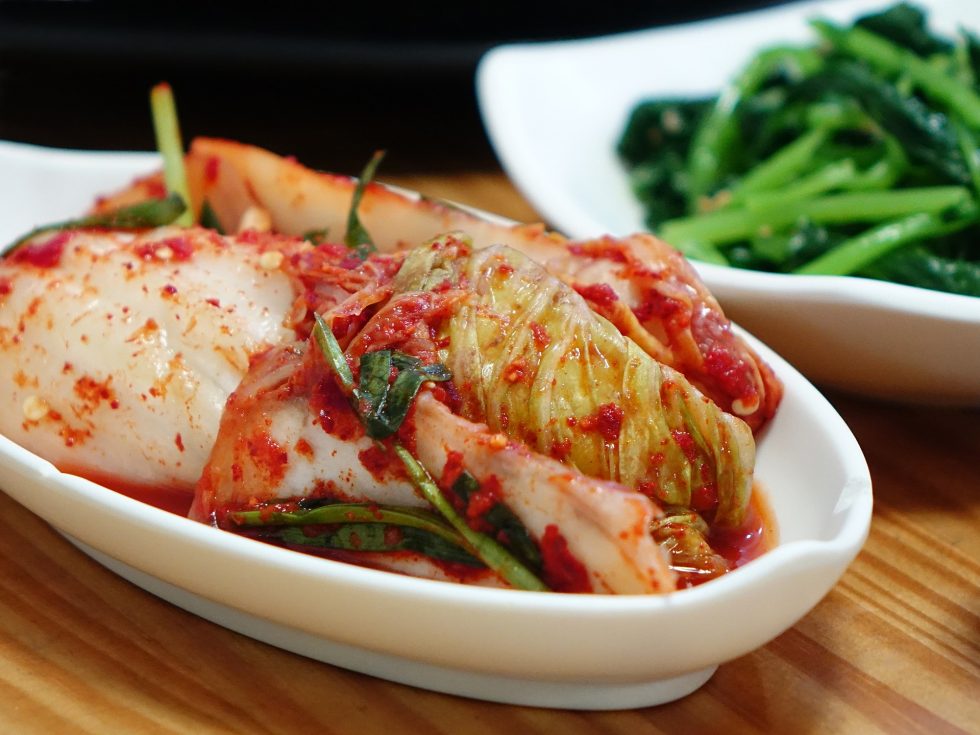
Napa Cabbage Kimchi
This is a super easy kimchi recipe that I’ve been making for years. It is the one I use when I teach my workshops. There is no fish-sauce used in the recipe which makes it vegan friendly. And, because we are using miso paste, there is less salt than other kimchi recipes.
I eat this kimchi constantly. The cabbage, garlic, and onions in it provide prebiotic fibres for the beneficial bacteria to thrive on. It goes great with eggs in the morning or as a side to any meal. Sometimes I just eat it straight outta the jar!
Ingredients
- 2 small or one medium head Napa cabbage, chopped into bite-sized pieces (save 1-2 of the outer leaves intact)
- 6-8 green oinions
- 8 ounces daikon, julienned or cut into rounds
- 3-4 carrots, sliced
- Small amounts of pretty much any cut-up vegetable you like!
- 1/4 cup salt (Himalayan, gray sea salt…any non-iodized salt)
- 8 cups water at room temperature
- 2 inches peeled ginger, grated or minced
- 4-6 cloves of garlic
- 1 Tbsp miso paste (do not add more because it is salty; it’s okay to add a little less, or leave this out)
- 2-4 Tbsp Korean Chili Powder (find at a Korean grocery market. If you can’t find any, just add regular hot peppers)
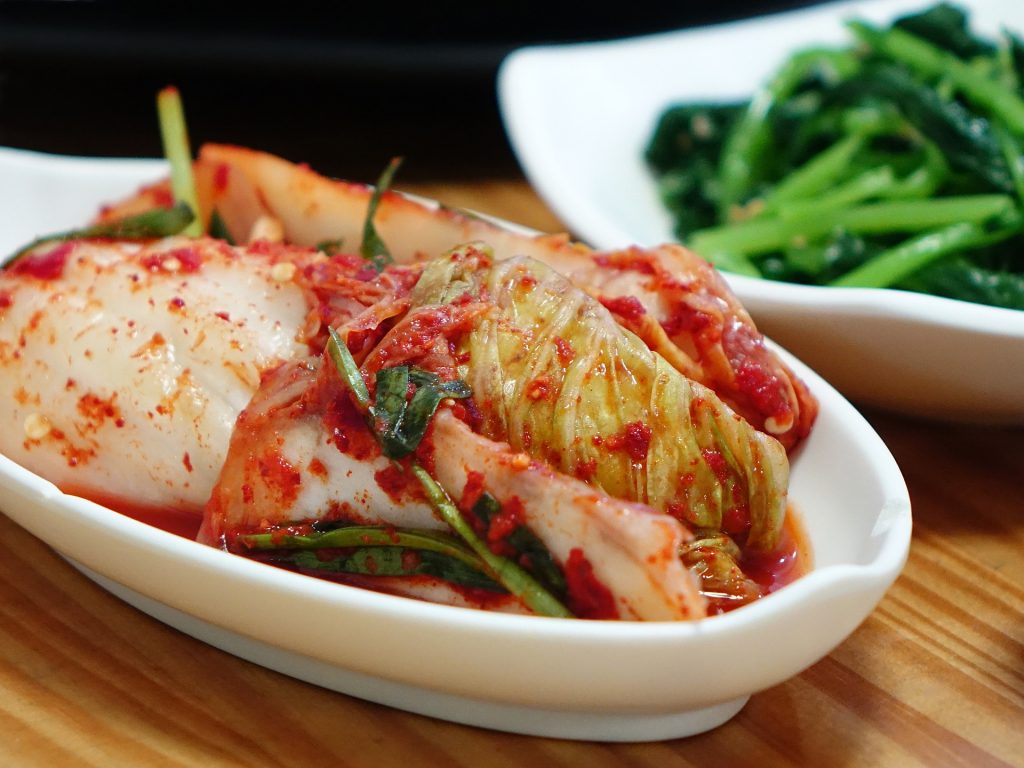
Instructions
- Combine the cabbage, green onions, daikon and carrots (or other veggies) in a large bowl.
- In another bowl, dissolve salt into water. Pour over the veggies. Put an upside-down plate or a pot lid over the veggies to keep them submerged. Let sit for 8 hours or longer.
- Drain and reserve brine. Return veggies to bowl.
- Add the ginger, garlic, miso, and chili powder to a blender or food processor, with enough of the brine to process.
- Get your hands dirty: add the paste into the veggies and mix it in well. All of the veggies should be coated with the paste. You can add a little more brine if needed.
- Pack the veggies into your fermentation vessel. Pour enough of the reserved brine into the vessel to make sure that everything is under the brine. Use the reserved cabbage leaf to put flat on top of the veggies to hold everything under the brine. Place a weight in the jar to push things down.
- Cover with cheesecloth or kitchen towel (to keep fruit flies out).
- Leave at room temp for at least a week, but ideally three. Taste. If it’s not sour enough, leave it out longer. Taste it every day until it’s right (or very close to right).
- Once it is ready, put into the fridge. It will continue to get a little bit sour in the fridge, but not at nearly as fast a rate as on the counter.
- Enjoy!

